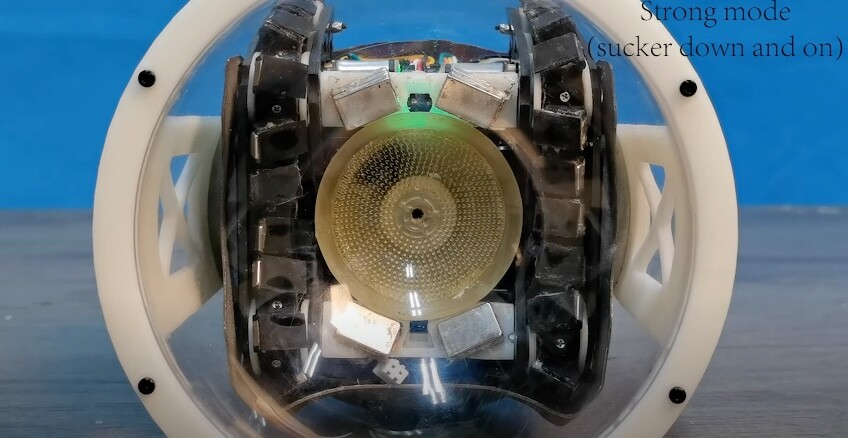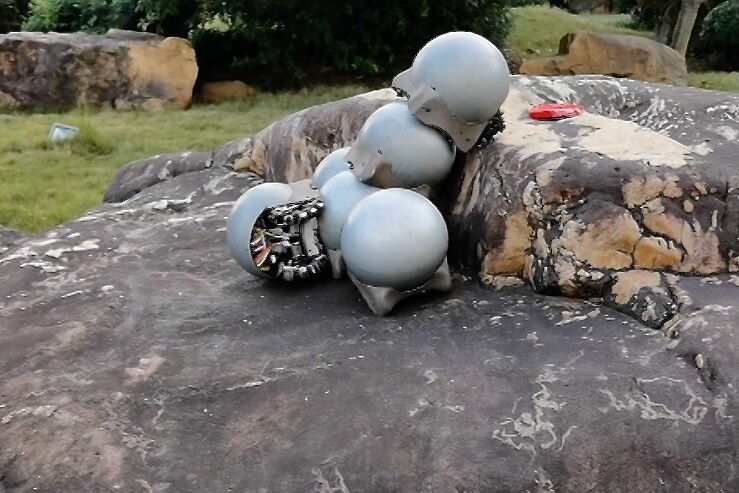Even though snails are slow and slimy-bottomed, they’ve inspired a new type of robot that could be quite useful. Groups of these bots can operate independently or join together in order to perform tasks that would otherwise be impossible.
In recent years we’ve heard a lot about “swarm robotics.”
This concept involves utilizing small robots that can work either on their own or as one facet of a group of identical bots. In the latter scenario, all the robots communicate with one another, coordinating their movements in order to get the job done.
That job might entail searching for survivors at disaster sites, performing reconnaissance in hazardous environments, or even exploring the surfaces of other planets.
For some applications, the robots have to physically link up with one another.
Because aerial and underwater bots can move both horizontally and vertically, they’re able to form three-dimensional shapes when joined together. By contrast, because terrestrial (ground-going) robots can only move horizontally, they’re limited to forming two-dimensional shapes – thus limiting their potential uses. What’s more, most of the experimental models created so far can only move across smooth, flat surfaces.
Things would be different, however, if there were “off-road” terrestrial bots that could climb up on top of one another, stacking themselves into three-dimensional configurations. That’s where the new snail robot comes in.

The Chinese University of Hong Kong
Developed by Da Zhao and colleagues at The Chinese University of Hong Kong, the device was inspired by the White Jade land snail. Like that gastropod, it can move itself along while doing a pretty good job at sticking to surfaces, but then stop and use suction to form a much stronger bond when needed.
The robot has a spherical ferromagnetic iron shell, inside of which are a battery, microprocessor and other electronics. On the bottom of that shell is a set of tank-like tracks made of rubber with embedded magnets. A retractable vacuum-powered suction cup is located between the two tracks.

The Chinese University of Hong Kong
When the robot is moving in “free mode,” the suction cup is kept withdrawn and unpowered. The bot simply moves across both smooth and uneven terrain on its tracks, utilizing the magnets in those tracks to climb up on top of the shells of other snail robots.
Once it’s in place up there, the bot switches to “strong mode” by lowering and powering up its suction cup. That cup then clings tightly to the shell of the other robot, holding the two bots firmly together. That said, the robot’s shell can still rotate relative to the cup, allowing it to pivot on the spot without losing suction.

The Chinese University of Hong Kong
In outdoor tests performed so far, swarms of the snail robots have worked together to perform tasks such as climbing up over ledges, making their way across gaps, and forming a single robotic arm. Although the bots were remotely controlled for these experiments, it is hoped that their descendants could one day do such things autonomously.
You can see the snail robots in action, in the video bellow. A paper on the research was recently published in the journal Nature Communications.
And should you be disappointed that the bots don’t look that much like real snails, check out the self-healing robo-snail that was created last year at Carnegie Mellon University.
[Nature Communications] Snail-inspired robotic swarms
Source: Nature Communications
Source of Article